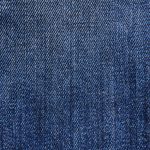Are you looking to stretch silk screen fabric? In this article, we’ll show you the step-by-step process to achieve a taut and secure fabric for your silk screen printing needs.
You’ll learn how to:
- Choose the right fabric
- Prepare the frame
- Attach the fabric
- Stretch it taut
- Secure it in place
We’ll also provide tips on how to properly care for and maintain your stretched silk screen fabric.
Let’s get started!
Table of Contents
Choosing the Right Silk Screen Fabric
To choose the right silk screen fabric, you’ll need to consider factors such as thread count and mesh tension. Silk screen printing techniques require a fabric that can withstand the pressure and tension of the process while still allowing ink to pass through smoothly.
One of the main benefits of using silk screen fabric is its durability. With the right thread count and mesh tension, the fabric can withstand multiple prints without losing its quality. This means that you can use the same fabric for a long time, saving you money in the long run.
Another benefit of using silk screen fabric is its versatility. It can be used on a variety of surfaces, including paper, fabric, and even wood. This makes it a popular choice for artists and designers who want to create unique and vibrant prints.
Preparing the Frame for Stretching
Before stretching the silk screen fabric, ensure that the frame is properly prepared. This step is crucial to ensure a smooth and successful stretching process.
First, make sure the frame is clean and free from any dirt or debris. Wipe it down with a damp cloth if necessary.
Next, check the frame for any damages or loose parts. Repair or replace any damaged sections to ensure stability during stretching.
Now, let’s move on to the stretching techniques. Start by placing the fabric over the frame, making sure it is centered and aligned.
Begin stretching the fabric by pulling it tightly across one side of the frame and securing it with staples or tacks. Repeat this process on the opposite side, ensuring even tension on both sides.
Continue stretching and securing the fabric on the remaining sides until it is taut and smooth.
If you are looking for alternative frame materials, consider using aluminum or wooden frames. These materials are durable and provide excellent stability for stretching the silk screen fabric.
Attaching the Silk Screen Fabric to the Frame
Once the frame is properly prepared, attach the silk screen fabric using staples or tacks. This step is crucial in ensuring a tight and smooth surface for printing.
To begin, lay the fabric over the frame, making sure it covers the entire surface. Start at one corner and secure the fabric by stapling or tacking it to the frame. Work your way around, pulling the fabric taut as you go. This tensioning technique is essential for achieving accurate and consistent prints. Make sure to place the staples or tacks close together, about an inch apart, to prevent any sagging or loose areas.
While staples and tacks are the traditional attachment methods, there are alternative techniques you can consider. One option is to use a screen adhesive, which allows for a strong bond between the fabric and the frame. Another alternative is the use of clamps or rubber bands to stretch the fabric over the frame. These methods offer flexibility and ease of removal if you need to replace or reposition the fabric.
Whichever method you choose, ensure that the fabric is securely attached and properly tensioned to achieve the best printing results.
Stretching the Fabric Taut
Using staples or tacks, secure the fabric tightly to the frame, ensuring a smooth surface for printing.
To stretch the fabric taut, start by placing the frame on a flat surface. Pull the fabric over the frame, making sure it is centered and evenly distributed.
Begin securing the fabric to the frame at one corner, using a staple or tack. Move to the opposite corner and pull the fabric tightly, securing it with another staple or tack. Repeat this process for the remaining corners, pulling the fabric tightly each time.
Continue securing the fabric along the sides, spacing the staples or tacks evenly. As you go, make sure to maintain tension, avoiding any wrinkles or loose areas.
To ensure a smooth surface, periodically check the tension by gently tapping the fabric with your fingertips. If it feels loose or sagging, adjust the tension by pulling the fabric tighter and adding additional staples or tacks.
Once the fabric is securely stretched and free from wrinkles, it is ready for printing.
Securing the Fabric in Place
Now that you’ve stretched the fabric taut, the next step is to secure it in place. There are several methods you can use to achieve this.
First, you can choose between tacking and stapling the fabric to a wooden frame, depending on your preference and the type of fabric you’re working with.
Another option is to use adhesive tape to hold the fabric in place, which can be a quick and easy solution.
Tacking Versus Stapling
To properly stretch your silk screen fabric, you’ll want to consider whether tacking or stapling is the better option for you. Both methods have their pros and cons, so it’s important to understand the alternatives to tacking and the different stapling techniques available.
Tacking alternatives:
- Clips: Using clips to secure the fabric to the frame allows for easy adjustment and repositioning, ensuring a tight and even stretch.
- Adhesive: Some screen printers prefer using adhesive to secure the fabric to the frame. This method provides a strong hold and eliminates the risk of the fabric shifting during the printing process.
Stapling techniques:
- Basic stapling: This involves using a staple gun to secure the fabric to the frame, evenly spacing the staples along the edges. It’s a popular and reliable method.
- Double-stapling: For extra tension, some printers opt to double-staple the fabric, placing additional staples parallel to the first row.
Consider your preferences and the specific requirements of your project when deciding between tacking and stapling.
Using Adhesive Tape
Some screen printers prefer adhesive tape as an alternative method for securing the fabric to the frame. While adhesive tape can be a convenient option, there are some common mistakes that people make when using it for stretching silk screen fabric. It’s important to be aware of these mistakes to ensure a successful printing process.
One common mistake is using tape that is not strong enough to hold the fabric in place. This can result in the fabric shifting or coming loose during the printing process. Another mistake is not applying the tape evenly, which can cause uneven tension on the fabric and affect the quality of the print. Additionally, using tape that is too sticky can leave residue on the fabric or frame, making it difficult to remove.
When using adhesive tape, it’s also worth considering alternatives such as clamps, staples, or adhesive sprays. These options may provide a more secure and reliable method for stretching silk screen fabric.
| Common Mistakes | Alternatives to adhesive tape |
|---|---|
| Using weak tape | Clamps |
| Uneven application | Staples |
| Sticky residue | Adhesive sprays |
Adjustable Clamping Methods
Using clamps can provide a secure and adjustable method for securing the fabric to the frame. Here are some alternative techniques and troubleshooting tips to help you with this process:
-
Clamp types:
-
Spring clamps: These clamps have a spring mechanism that provides a strong grip on the fabric, ensuring it stays in place during the stretching process.
-
Bar clamps: These clamps have a long bar that can be adjusted to fit the frame’s width, providing even pressure across the fabric.
-
Troubleshooting tips:
-
Uneven tension: If you notice any areas with uneven tension, you can readjust the clamps to apply more pressure in those areas.
-
Fabric slippage: To prevent the fabric from slipping, make sure to tighten the clamps securely and evenly across the frame.
Proper Care and Maintenance of Stretched Silk Screen Fabric
Take good care of your stretched silk screen fabric by following these maintenance tips.
Proper care and maintenance are essential to ensure the longevity and quality of your fabric. Regular cleaning and preventing fabric sagging are two key aspects of maintenance that you should focus on.
To clean your silk screen fabric, gently remove any dust or debris using a soft brush or a vacuum cleaner with a brush attachment. Avoid using harsh chemicals or abrasive materials that could damage the fabric. For stubborn stains, use a mild detergent and warm water, and gently blot the affected area. Rinse thoroughly and allow the fabric to air dry.
Preventing fabric sagging is crucial to maintain the tension and integrity of your silk screen fabric. Here are some tips to prevent sagging:
-
Use a proper frame size: Ensure that the frame you choose is suitable for the size of your fabric. A frame that is too large or too small can cause sagging.
-
Tension the fabric properly: When stretching the fabric onto the frame, ensure that it is evenly stretched and tightened. Use tensioning devices or tools to achieve the desired tension.
-
Store the fabric properly: When not in use, roll the fabric tightly and store it in a cool, dry place. Avoid folding or creasing the fabric, as this can lead to permanent sagging.
Conclusion
In conclusion, stretching silk screen fabric requires careful preparation and attention to detail. By choosing the right fabric and properly preparing the frame, you can ensure a smooth and taut surface for your screen printing projects.
Attaching the fabric securely and stretching it tautly are essential steps to achieve optimal results.
Finally, proper care and maintenance of the stretched fabric will ensure its longevity and continued use.
By following these steps, you can successfully stretch silk screen fabric and create beautiful prints.
- Tetron Fabric for Marine Applications: Durability and Use Cases - June 18, 2025
- Tetron Fabric for Outdoor Furniture: Weather Resistance and Care - June 18, 2025
- Tetron Fabric for Wall Coverings: Style and Application Tips - June 18, 2025





